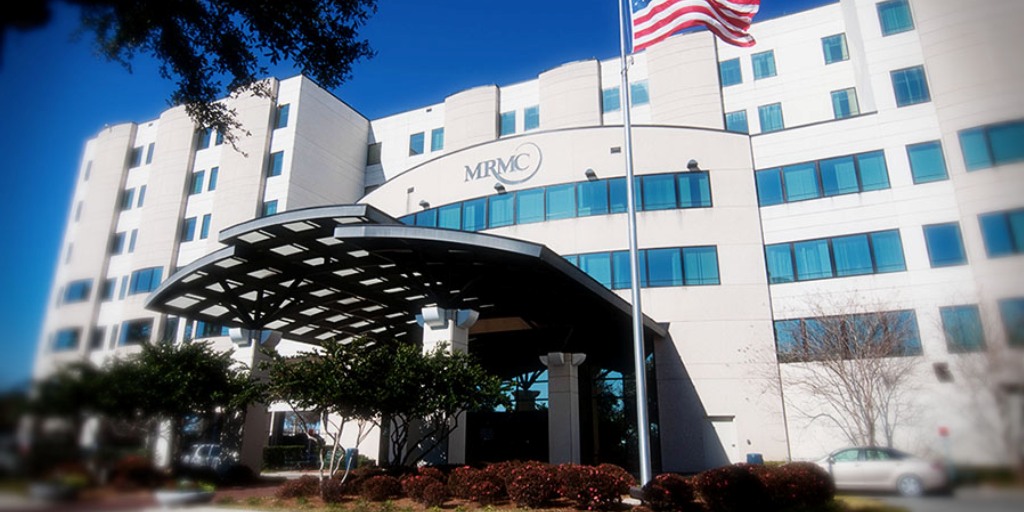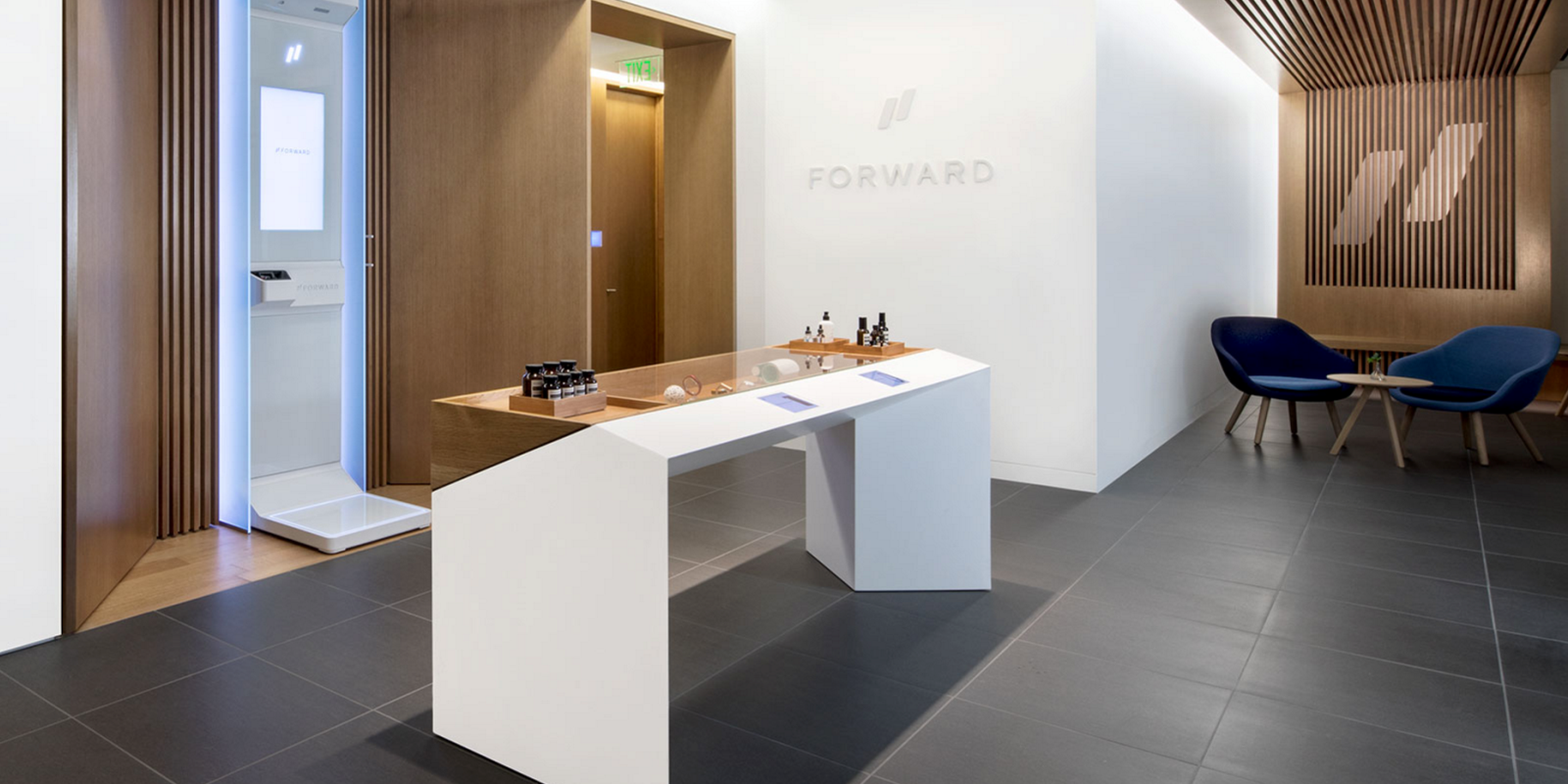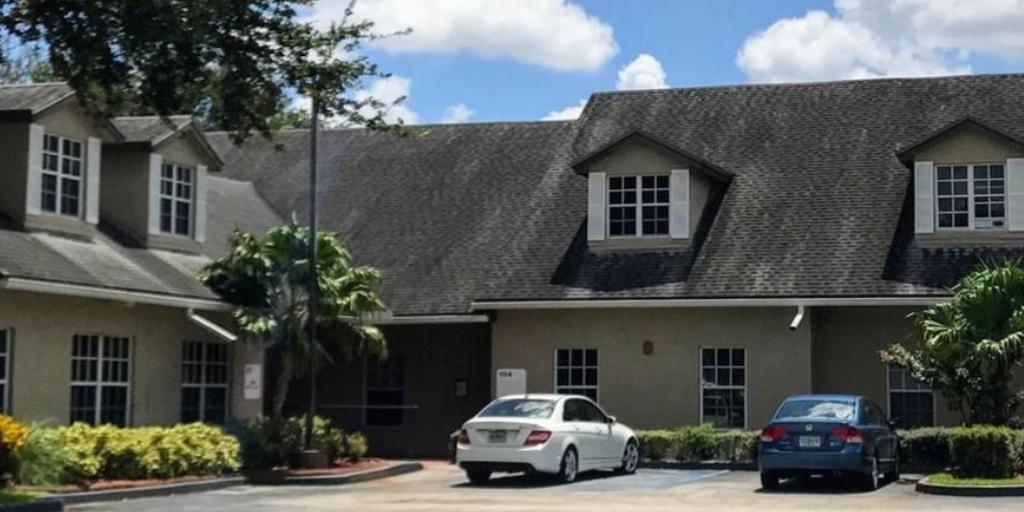

Medical real estate (MOB) is a sector undergoing some changes, but its future outlook remains stable. As healthcare providers continue to grapple with changes in reimbursement policies, investors are increasingly viewing these assets as more than just alternatives to core real estate sectors, says Lisa Strope, director of research at real estate services firm JLL. “It’s a really good time for healthcare investment,” Strope says. Here are some key updates on the sector from several industry experts.
1. There is a lot of development. And it’s happening across the country, says Mike Hargrave, principal at Revista, a medical real estate research firm. According to Revista’s construction report, the U.S. can expect to see about 22 million sq. ft. of medial office space delivered this year. “That would be really the high-water mark going all the way back to 2008,” Hargrave says.
2. But development is not outpacing demand. This new construction represents just 1.5 percent of existing stock, according to Revista figures. “It’s not like that inventory’s growing at a pace that demand can’t keep up with,” Hargrave says. In addition, very little of this pipeline is made up of speculative construction. Demand for medical office building and outpatient care centers continues to grow rapidly, and supply is keeping pace, says Mindy Berman, managing director at JLL, as technological advancements have allowed more critical medical care to be provided in retail settings and not just hospitals.
3. Construction trends differ geographically. In states including Missouri, Colorado and Texas, new development can happen quicker, whereas in more regulated states, you may see hospitals leasing space in a retail strip, Hargrave says. In some states where there is more land available—like Texas, for example—there is the growing trend of micro-hospitals and freestanding emergency rooms popping up, he notes. “The common thread is the hospitals are in a mad dash to protect market share, to grow market share and to deliver healthcare to the community,” Hargrave says.
4. The “retailization” of medical real estate has been driven by demographics and technology. According to a recent report on the sector from real estate services firm Avison Young, there are around 1,500 to 2,000 mobile clinics around the country, more than 2,000 retail clinics and about 5,600 ambulatory surgical centers. “The concept is that care providers are meeting their patients where they are. With medical offices located in prime retail locations, patients can access care in a convenient spot while running other errands,” Berman says. And the shift from retail to healthcare use is easier than one might think; such facilities tend to have high visibility, easy access and a large floor space, Strope adds. This ongoing “mutation of uses” of medical office space has resulted in part because of the aging of the baby boomer and millennial generations, the latter of which tends to go to the doctor for check-ups and preventative care less, says report author Tula Voutieros, senior research analyst at Avison Young. “You’re really seeing much more flexible open design in spaces, gearing the industry for preparedness of change along with the healthcare industry,” Voutieros says. Meanwhile, technological advances and changes in healthcare reimbursements have also helped to shift services more to out-patient locations—all to help keep healthcare costs down, Berman says. According to JLL’s health care real estate outlook for 2018, 39 percent of the market value for U.S. healthcare real estate is concentrated in outpatient facilities and MOBs; 31 percent is concentrated in hospitals.
5. The sector’s fundamentals are stable. “Operationally speaking, there’s nothing in the fundamentals that suggests that the sector should be heading to a downturn,” Hargrave says. MOBs have posted stable occupancy rates, a trend anticipated to continue. Jll’s report notes a quarterly weighted average occupancy rate between 90.4 percent in the first quarter of 2009 and 92.6 percent in the fourth quarter of 2016, “a mere 200-basis-point spread from recent peak to trough.” Meanwhile, pricing has slowly risen, up an average of 49.8 percent over the past five years.
6. There’s been a shift in who’s buying. Healthcare REITs used to be the dominant force in buying institutional grade class-A medical assets, as they had the lowest cost to capital and the ability to place the highest bids, Hargrave says. “That changed coming into 2018, and really whether it’s the big three REITs or whether it’s the MOB-focused REITs, their cost to capital has gone up,” says Hargrave. This has led a number of institutional-grade private equity firms to view class-A MOB assets as core real estate. “REITs are a little bit less active now than they were a year ago,” Hargrave says. According to JLL’s research, medical office assets have regularly posted a 200-basis-point spread in cap rate over the past five years; yields are anticipated to come in at 6.7 percent this year for MOBs.
Source: NREI
2. But development is not outpacing demand. This new construction represents just 1.5 percent of existing stock, according to Revista figures. “It’s not like that inventory’s growing at a pace that demand can’t keep up with,” Hargrave says. In addition, very little of this pipeline is made up of speculative construction. Demand for medical office building and outpatient care centers continues to grow rapidly, and supply is keeping pace, says Mindy Berman, managing director at JLL, as technological advancements have allowed more critical medical care to be provided in retail settings and not just hospitals.
3. Construction trends differ geographically. In states including Missouri, Colorado and Texas, new development can happen quicker, whereas in more regulated states, you may see hospitals leasing space in a retail strip, Hargrave says. In some states where there is more land available—like Texas, for example—there is the growing trend of micro-hospitals and freestanding emergency rooms popping up, he notes. “The common thread is the hospitals are in a mad dash to protect market share, to grow market share and to deliver healthcare to the community,” Hargrave says.
4. The “retailization” of medical real estate has been driven by demographics and technology. According to a recent report on the sector from real estate services firm Avison Young, there are around 1,500 to 2,000 mobile clinics around the country, more than 2,000 retail clinics and about 5,600 ambulatory surgical centers. “The concept is that care providers are meeting their patients where they are. With medical offices located in prime retail locations, patients can access care in a convenient spot while running other errands,” Berman says. And the shift from retail to healthcare use is easier than one might think; such facilities tend to have high visibility, easy access and a large floor space, Strope adds. This ongoing “mutation of uses” of medical office space has resulted in part because of the aging of the baby boomer and millennial generations, the latter of which tends to go to the doctor for check-ups and preventative care less, says report author Tula Voutieros, senior research analyst at Avison Young. “You’re really seeing much more flexible open design in spaces, gearing the industry for preparedness of change along with the healthcare industry,” Voutieros says. Meanwhile, technological advances and changes in healthcare reimbursements have also helped to shift services more to out-patient locations—all to help keep healthcare costs down, Berman says. According to JLL’s health care real estate outlook for 2018, 39 percent of the market value for U.S. healthcare real estate is concentrated in outpatient facilities and MOBs; 31 percent is concentrated in hospitals.
5. The sector’s fundamentals are stable. “Operationally speaking, there’s nothing in the fundamentals that suggests that the sector should be heading to a downturn,” Hargrave says. MOBs have posted stable occupancy rates, a trend anticipated to continue. Jll’s report notes a quarterly weighted average occupancy rate between 90.4 percent in the first quarter of 2009 and 92.6 percent in the fourth quarter of 2016, “a mere 200-basis-point spread from recent peak to trough.” Meanwhile, pricing has slowly risen, up an average of 49.8 percent over the past five years.
6. There’s been a shift in who’s buying. Healthcare REITs used to be the dominant force in buying institutional grade class-A medical assets, as they had the lowest cost to capital and the ability to place the highest bids, Hargrave says. “That changed coming into 2018, and really whether it’s the big three REITs or whether it’s the MOB-focused REITs, their cost to capital has gone up,” says Hargrave. This has led a number of institutional-grade private equity firms to view class-A MOB assets as core real estate. “REITs are a little bit less active now than they were a year ago,” Hargrave says. According to JLL’s research, medical office assets have regularly posted a 200-basis-point spread in cap rate over the past five years; yields are anticipated to come in at 6.7 percent this year for MOBs.
Source: NREI
4. The “retailization” of medical real estate has been driven by demographics and technology. According to a recent report on the sector from real estate services firm Avison Young, there are around 1,500 to 2,000 mobile clinics around the country, more than 2,000 retail clinics and about 5,600 ambulatory surgical centers. “The concept is that care providers are meeting their patients where they are. With medical offices located in prime retail locations, patients can access care in a convenient spot while running other errands,” Berman says. And the shift from retail to healthcare use is easier than one might think; such facilities tend to have high visibility, easy access and a large floor space, Strope adds. This ongoing “mutation of uses” of medical office space has resulted in part because of the aging of the baby boomer and millennial generations, the latter of which tends to go to the doctor for check-ups and preventative care less, says report author Tula Voutieros, senior research analyst at Avison Young. “You’re really seeing much more flexible open design in spaces, gearing the industry for preparedness of change along with the healthcare industry,” Voutieros says. Meanwhile, technological advances and changes in healthcare reimbursements have also helped to shift services more to out-patient locations—all to help keep healthcare costs down, Berman says. According to JLL’s health care real estate outlook for 2018, 39 percent of the market value for U.S. healthcare real estate is concentrated in outpatient facilities and MOBs; 31 percent is concentrated in hospitals.
5. The sector’s fundamentals are stable. “Operationally speaking, there’s nothing in the fundamentals that suggests that the sector should be heading to a downturn,” Hargrave says. MOBs have posted stable occupancy rates, a trend anticipated to continue. Jll’s report notes a quarterly weighted average occupancy rate between 90.4 percent in the first quarter of 2009 and 92.6 percent in the fourth quarter of 2016, “a mere 200-basis-point spread from recent peak to trough.” Meanwhile, pricing has slowly risen, up an average of 49.8 percent over the past five years.
6. There’s been a shift in who’s buying. Healthcare REITs used to be the dominant force in buying institutional grade class-A medical assets, as they had the lowest cost to capital and the ability to place the highest bids, Hargrave says. “That changed coming into 2018, and really whether it’s the big three REITs or whether it’s the MOB-focused REITs, their cost to capital has gone up,” says Hargrave. This has led a number of institutional-grade private equity firms to view class-A MOB assets as core real estate. “REITs are a little bit less active now than they were a year ago,” Hargrave says. According to JLL’s research, medical office assets have regularly posted a 200-basis-point spread in cap rate over the past five years; yields are anticipated to come in at 6.7 percent this year for MOBs.
Source: NREI
6. There’s been a shift in who’s buying. Healthcare REITs used to be the dominant force in buying institutional grade class-A medical assets, as they had the lowest cost to capital and the ability to place the highest bids, Hargrave says. “That changed coming into 2018, and really whether it’s the big three REITs or whether it’s the MOB-focused REITs, their cost to capital has gone up,” says Hargrave. This has led a number of institutional-grade private equity firms to view class-A MOB assets as core real estate. “REITs are a little bit less active now than they were a year ago,” Hargrave says. According to JLL’s research, medical office assets have regularly posted a 200-basis-point spread in cap rate over the past five years; yields are anticipated to come in at 6.7 percent this year for MOBs.
Source: NREI

Nearly 3 acres of land in Davie have been sold for $2.4 million to a developer looking to build medical and office space.
T.D.R.S. Properties Inc. has sold the property, at 7900 NW 33rd St., to New York-based investment group Nig FL Realty.
Located east of University Drive, the parcel has a 7,500-square-foot medical office building — the Carissa Rose Medical Complex — on 1.13 acres. The rest is empty land.
The town “looks forward to the construction of more medical office space,” said Phillip R. Holste, assistant town administrator and interim director of the Community Redevelopment Agency.
He said there’s demand with the construction of the new HCA hospital on the campus of Nova Southeastern University that begins later this year.
Source: Sun Sentinel

Florida’s embattled medical marijuana office continues wading through rulemaking—two years after Florida voters approved the system. But the industry is moving faster than regulators’ ability to govern it, leading to problems.
Last week a California-based medical marijuana company purchased a Florida one for $53 million. There have been a couple of these sales already. Yet only now is the Florida Department of Health’s Office of Compassionate Use coming up with rules to govern ownership transfers. The Office’s Director Christian Bax says the rule is aimed at quality control.
“And so we’re asking for the same information as we would ask another MMTC [Medical Marijuana Treatment Center] applicant,” he said.
The department wants new owners to go through a similar process as the original ones did, including background and financial checks. In the absence of firm rules on everything from how much licenses will cost, to ownership transfers, the Department is trying to put in temporary policies to fill the gap. These temporary rules are called variances.
The Office of Compassionate use has been under fire from all sides. It’s been accused of moving too slow, and earlier this year Florida lawmakers threatened to cut its funding. Some players, such as the Lockwood law firm which represents Medical Marijuana companies, want the department to speed up rule development.
“We have two major concerns with the proposed rule today. The first is that it lacks a turnaround time,” said the Lockwood firm’s Devon Nunneley. She wants to see changes that will get new products to patients faster.
“Any delay in the variance approval process really slows down our client. So we were hoping to see a rule that gives the office a certain timeline—something like 15 days—to approve or deny a variance request so that we could have some certainty in that regard.”
More recently a Leon County Circuit judge gave the state a week to make rules regarding smoke-able marijuana, after the same judge earlier found the state’s ban on smoke-ables unconstitutional. The deadline to make those rules was Monday. The state appealed the decision Friday. In a statement, a Health Department spokesman says patients have access to medical marijuana in different forms under the law and that its making progress in making medical marijuana available to the more than 117,000 Floridians who have licenses.
“And so we’re asking for the same information as we would ask another MMTC [Medical Marijuana Treatment Center] applicant,” he said.
The department wants new owners to go through a similar process as the original ones did, including background and financial checks. In the absence of firm rules on everything from how much licenses will cost, to ownership transfers, the Department is trying to put in temporary policies to fill the gap. These temporary rules are called variances.
The Office of Compassionate use has been under fire from all sides. It’s been accused of moving too slow, and earlier this year Florida lawmakers threatened to cut its funding. Some players, such as the Lockwood law firm which represents Medical Marijuana companies, want the department to speed up rule development.
“We have two major concerns with the proposed rule today. The first is that it lacks a turnaround time,” said the Lockwood firm’s Devon Nunneley. She wants to see changes that will get new products to patients faster.
“Any delay in the variance approval process really slows down our client. So we were hoping to see a rule that gives the office a certain timeline—something like 15 days—to approve or deny a variance request so that we could have some certainty in that regard.”
More recently a Leon County Circuit judge gave the state a week to make rules regarding smoke-able marijuana, after the same judge earlier found the state’s ban on smoke-ables unconstitutional. The deadline to make those rules was Monday. The state appealed the decision Friday. In a statement, a Health Department spokesman says patients have access to medical marijuana in different forms under the law and that its making progress in making medical marijuana available to the more than 117,000 Floridians who have licenses.
The Office of Compassionate use has been under fire from all sides. It’s been accused of moving too slow, and earlier this year Florida lawmakers threatened to cut its funding. Some players, such as the Lockwood law firm which represents Medical Marijuana companies, want the department to speed up rule development.
“We have two major concerns with the proposed rule today. The first is that it lacks a turnaround time,” said the Lockwood firm’s Devon Nunneley. She wants to see changes that will get new products to patients faster.
“Any delay in the variance approval process really slows down our client. So we were hoping to see a rule that gives the office a certain timeline—something like 15 days—to approve or deny a variance request so that we could have some certainty in that regard.”
More recently a Leon County Circuit judge gave the state a week to make rules regarding smoke-able marijuana, after the same judge earlier found the state’s ban on smoke-ables unconstitutional. The deadline to make those rules was Monday. The state appealed the decision Friday. In a statement, a Health Department spokesman says patients have access to medical marijuana in different forms under the law and that its making progress in making medical marijuana available to the more than 117,000 Floridians who have licenses.
“Any delay in the variance approval process really slows down our client. So we were hoping to see a rule that gives the office a certain timeline—something like 15 days—to approve or deny a variance request so that we could have some certainty in that regard.”
More recently a Leon County Circuit judge gave the state a week to make rules regarding smoke-able marijuana, after the same judge earlier found the state’s ban on smoke-ables unconstitutional. The deadline to make those rules was Monday. The state appealed the decision Friday. In a statement, a Health Department spokesman says patients have access to medical marijuana in different forms under the law and that its making progress in making medical marijuana available to the more than 117,000 Floridians who have licenses.
Source: Florida Trend

